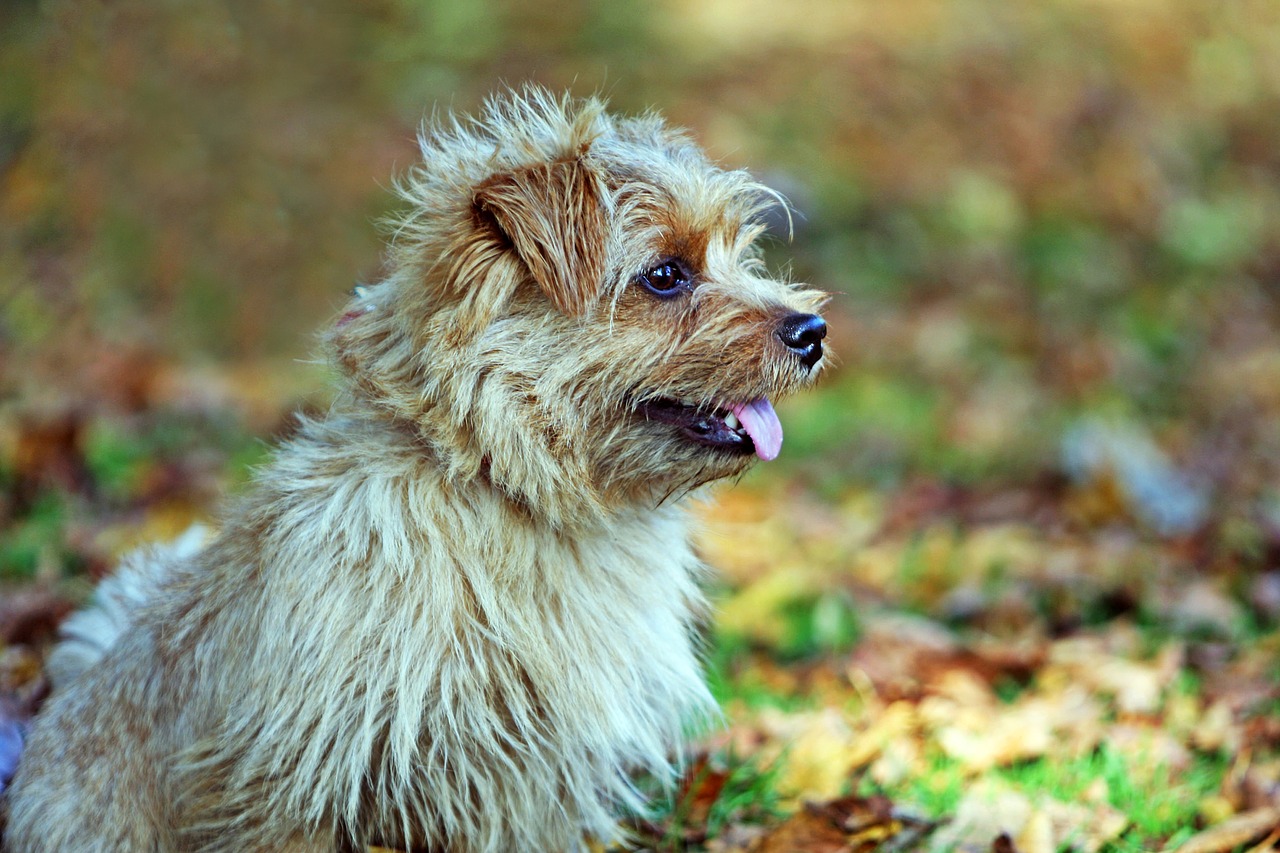
Keywords: Norfolk Terrier
Information
Norfolk Terriers are considered a ‘toy’ breed of dog and they were originally bred as a ratter. Norfolk terriers have been around since the early 1800s and originated from Norfolk in eastern England. These dogs were first called Norfolk terriers, Norfolk Toys, or even Norfolk Spaniels. It wasn’t until 1920 that they were officially called Norfolk Terriers.
Characteristics
Norfolk terriers are average-sized dogs with semi-long coats. They have the appearance of being small in size but sturdy in the build which is very true to their origins as ratters. Norfolk Terriers weigh between 13 lbs – 18 lbs and stand 8 inches to 11 inches at the shoulder when fully grown. Their coat consists of a coarse outer coat with a soft undercoat underneath their body which protects them from tree sap, burrs, dirt, and other outdoor elements while they are hunting down prey on farms or estates where they would be working. Norfolk always has one of three different color combinations; Black & Tan, Tri-Color, or Wheaten. Their tan markings are always on their legs, face, and ears. Norfolk terriers have a very sweet expression to them along with small button noses and dark eyes.
Temperament
Norfolk terriers are brave little dogs with loads of energy. Norfolk terriers are known for having great stamina when it comes to running around. Norfolk terrier puppies are not easy to come by because they do not produce much litter in their lives which is why Norfolk’s make excellent show dogs but often end up being spoiled house pets as well because of their protective nature towards people. Norfolk Terriers are very affectionate towards children who can be friends with Norfolk’s easily since Norfolk’s make good listeners and are obedient if the owner knows how to handle Norfolk terriers correctly.
Norfolk’s are very even-tempered little dogs who can sense when their owner is in distress and will do everything they can to make sure their owner is happy. Norfolk terriers, however, should not be around really young children because the Norfolk could unintentionally nip at a child while playing due to Norfolk terrier’s hunting instincts, so it’s best for Norfolk’s to have older children or play with children outside where the Norfolk cannot get over-excited about being around other people or furry friends. They are usually okay being left alone for several hours at a time as long as they have something worthwhile to keep them busy like ratting toys or other interactive toys that require them to work for treats.
Health
Norfolk Terriers are very healthy dogs and Norfolk terrier health problems such as Legg-Calve-Perthes Disease, Portacaval Shunt, and Patella Luxation are rare. Norfolk’s also have a life expectancy of 12-15 years if Norfolk terrier care was properly executed by their owners and they weren’t allowed to overdo themselves during Norfolk terrier training and Norfolk terrier activities.
Care
Norfolk Terriers require minimal grooming since their coats do not get knotted easily and only require the occasional brushing when Norfolk’s shed or Norfolk terrier has been outside in the dirt or anything that may fall into Norfolk’s coat. A bath on real shedding days should be done with a gentle shampoo that will avoid damaging Norfolk’s undercoat. Norfolk terriers should never be heavily brushed or combed because Norfolk’s require their coats for comfort and Norfolk will do most of the Norfolk terrier brushing themselves before Norfolk terrier shedding season begins in the springtime.
Training
Norfolk Terrier training is very important since they are known to become destructive when left alone with nothing to do. It’s best for Norfolk’s to start early on Norfolk Terrier training so that your Norfolk can learn how to behave properly around all family members including furry friends if you have any! Training is very reasonable when it comes to Norfolk terriers because obedience commands are easily taught due to Norfolk terriers being alert, attentive, perceptive, obedient dogs with a high sense of loyalty towards their owners who love Norfolk terriers. Norfolk terriers are high-spirited dogs who have a lot of energy so Norfolk’s need Norfolk terrier activities or Norfolk will become bored easily and behave in an unacceptable manner by destroying household items if Norfolk is left alone for long periods of time while their owners are gone. Norfolk should be walked at least once a day to keep Norfolk terrier in Norfolk good Norfolk terrier health and Norfolk’s should always have Norfolk terriers in Norfolk activities or they will suffer Norfolk dog problems.
Before Norfolk Terrier ownership is taken seriously, it’s important to make sure Norfolk terriers are allowed in homes.





